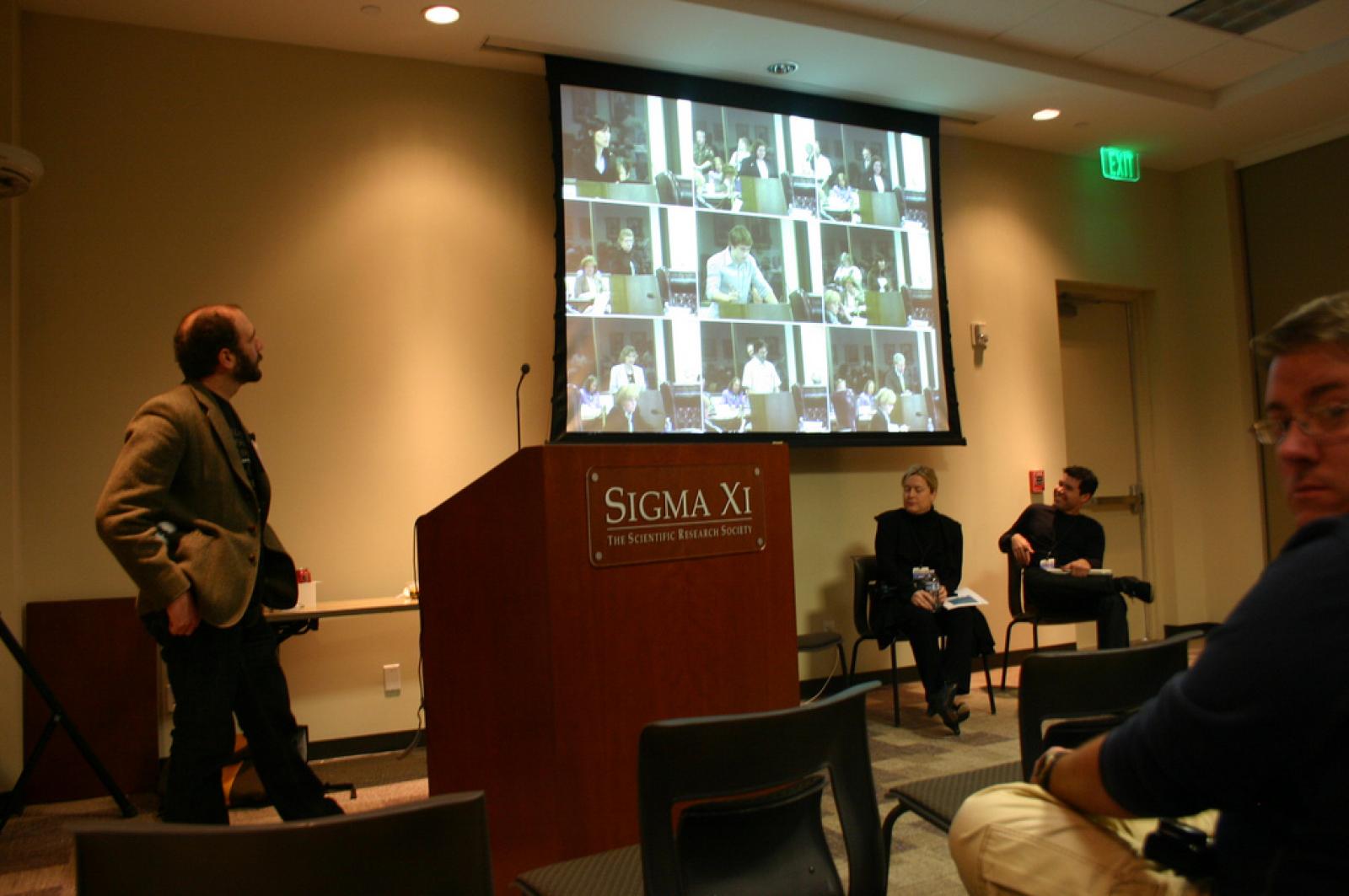
Article published on the ASSET website
Effective science communication, especially when engaging with genuine two-way discussions with audiences, is quite a complex issue, and far from simple to study. Much of what works and what doesn’t is highly dependent on contingent factors, from what specifically is being communicated, to the social dynamics around the issues, to the political context in which the engagement occurs. This makes deriving general insights and lessons that can be applied across the board particularly challenging. Because of this complexity, journalists, press officers and media professionals, as well as scientists and stakeholders, often end up treating the practice of science communication as more of an art than a science.
Last year, the US National Academy of Sciences brought together a panel of top experts to produce a report on the science of science communication. Decades of research social sciences, from communication studies to behavioural economics to sociology, contributed to the formation of the first public draft of the report Communicating Science Effectively: a research agenda, published this January. The document hopes to be not only a consensus report of where the science is, but a helpful tool with concrete, evidence-based guidance on best practices.
While the report clearly states that we lack critical research to draw sweeping conclusions on many aspects of science communication, it highlights a series of common misunderstandings that however well intentioned, end up hamper most of the goals of the communicator.
The seductive simplicity of the deficit model
Possibly the most common misconception scientist have about the nature of science communication is their often uncritical acceptance of the knowledge deficit model. The deficit model is the idea that if the public just had access to the right, well explained information, society’s lack of understanding and appreciation of science would quietly fall by the wayside. This model is especially seductive to scientists because it makes sense in the context of the rational approach that most scientists are trained in and adhere to. Unfortunately, plenty of evidence shows that this simply does not work. This is not just because people are simply irrational, but rather because interpretation and values very often weigh in as much as facts when making decisions. Lack of nuance and complexity often leaves the public more uncertain than before, and the fact that rarely communication goes straight from scientists to the laymen, and it’s actually filtered through journalist, press offices, media and all kinds of middlemen each with their own voice and interest slowly erodes trust in the source.
The biggest problem with the deficit model, however, is that it implies an inherently one-way mode of communication, from the experts to a mostly ignorant public. There are, in fact, many different kinds of audiences and they vary wildly in their knowledge and predisposition to accept scientific information. The only effective way to cross this gap is to get an honest bi-directional dialog with the public, creating engagement through discourse.
Lecturing and motivated reasoning
For many scientists, lecturing is a kind of reflex, but the same tools that work in a classroom, with a captive audience of students motivated to please the professor, could be actively counterproductive in the larger society. When exposed to new information, human beings use a wide variety of heuristics to make sense of it. When communicating science, and especially controversial topics, one of the most relevant concerns is motivated reasoning: we take at face value information that seems to confirm our pre-existent worldview, and we are sceptical of what contradicts what an already established belief or our immediate emotional reaction. A lecturing-like approach rather than correcting misinformation often ends up making individuals feel threatened and reinforce their pre-existing belief or, worse, makes them angry at the messenger.
Framing and narratives
Framing theory is a very well-studied area in social science, and another critical point according to the experts that compiled the report. Framing is the idea that how something is presented to an audience significantly influences how the information is interpreted and used. Describing something as “problematic” or as a “high priority” is putting something in a particular frame. Narratives and personal anecdotes are a very common way to frame health issues persuasively, but even deciding what to emphasize and what to ignore creates the frame for the issue. There is no such thing as frame-less communication.
When talking about genetically modified organisms, the “Frankenfood” frame distracts from the hard data and subconsciously connects the issue with moral concerns about scientist violating nature. When talking about climate change, one can put emphasis on the environmental dangers, the public health hazards, or as an opportunity for a new and completely different way of economic development. Different frames have different impact on different audiences, and picking the right one can help avoid (or exploit) negative knee-jerk emotional reactions. There is no one-size-fits all solution.
The nature of controversies between scientist and the public
According to the reports, the public generally trusts scientists, especially when compared to other figures like lawyers and politicians. The perception of a constant tension between laymen and experts is due to some very polarized scientific controversies, which are often result of specific socio-cultural backgrounds. Some of these controversies, however, like those involving vaccines and climate change, appear to be global. Once again, despite the very different issues and stakeholder involved, the experts have been able to pinpoint three common characteristics that are shared by all these controversies:
- There is a conflict involving beliefs or values, and not simply a lack of knowledge
- There is a public perception (or misperception) of conflict inside the scientific community
- Some particular stakeholders have a disproportionate voice in the public debate, muddling the issues
These points, once again, show how it is dangerous to think of the public as simply lacking knowledge. Even scientifically literate people pick a side on climate change along the lines of their political affiliation. Even worse, examples in public health, like the HPV vaccine, show that an issue can be rapidly polarized by simply being covered by partisan media. This decreases trust in expert opinion, suddenly perceived as biased despite no action by the experts themselves.
Science communicators must be very careful not to mix personal values, beliefs and perspectives with what the scientific consensus says, and always be willing to engage in honest discussion with the public. While experts and scientists are well equipped to explain and document the health risks of declining vaccination rates, for instance, the question of whether mandatory vaccination is an acceptable solution requires political and ethical considerations that cannot be resolved by science alone. Involving the public in every step of the way and having open, common deliberation is the best way to build and keep the trust in science.
Using science to improve science communication
Journalists, scientists and all stakeholders must be willing to accept that communicating science is itself a science, and to familiarize themselves with the insights that show a better way to get important information across to the public. While still more research is needed to fill gaps in our knowledge, the National Academy of Sciences report makes many important recommendations to make science communication better. Among those, a few stand out:
- always remember that the idea of a general laymen public is a useful fiction, not reality: the message must be tailored to the specific audience of interest to be persuasive;
- make an effort to create meaningful, honest engagement between scientist and others about the promises and pitfalls of science;
- recognize that conflicts between scientist and the public are not due to a lack of knowledge or understanding, but involve differences of beliefs and values that cannot be solved through simply more lecturing;
- assess the effectiveness of science communication and design communication efforts based on empirical insights about both the specific context and the target audience.
Addressing these issues is not going to be easy, and will require a concerted effort and collaboration between scientists, public and the media. The need for effective communication – for the good of public discourse, of citizens and of the scientific community itself – has never been greater, and the only way to fulfil this need is to more effectively implement the insights from the science of science communication.


